Fort Columbia State Park
Fort Columbia State Park is one of the most intact coastal defense forts on the West Coast, the park features a self-guided walking tour around historic gun batteries and other fort structures with scenic views of the Columbia River estuary. As part of Lewis & Clark National Park and located on the Chinook Point National Historic Landmark, all the names here get kind of confusing. Visitors are free to roam around, reading the interpretive signs, going in and around the buildings and batteries. There is an interpretive center open during July and August, which focuses on Fort Columbia's history, including the topics of early exploration, fur trade, and westward settlement. There are even a few vacation rentals if you really want to experience some history. Fort Columbia has many unsheltered picnic tables, and roughly 5 miles of hiking trails located on the hillside above the coastal defenses.
Washington State Parks
Work started in 1896 on Fort Columbia, one of three forts for harbor defense of the Columbia River. Gun batteries were in place by 1904. Battery 246 was a World War II installation, completed in 1945. After WWII, Fort Columbia became a Washington State Park in 1950, and then part of Lewis & Clark National and State Historic Parks in 2004. The park is an easy drive from popular destinations like Astoria, Oregon and Long Beach, Washington.
Park History
Fort Columbia has two 6-inch canons. Only four others exist in the world. Batery Murphy's two 6-inch disappearing guns were the most used guns of Fort Columbia. Built in 1900, they remained in operation through the end of World War II. Although the guns were never fired during actual combat, they were shot thousands of times for practice.
Baker Bay as seen from Fort Columbia. Cape Disappointment is in the far distance.
Here was the home of the Chinook Indians and their great chief. Comcomly. Capt. Robert Gray dropped anchor near here after his discovery of the Columbia River in 1792. In the days of the fur trade this area was witness to many stirring events and in 1843 Capt. Scarborough here became the first permanent settler to the north of the Columbia. For years this promontory served as a vital landmark for the safe crossing of the Columbia's bar. Finally as a coastal fort. Its guns here guarded the mouth of the river from 1896 until the end of World War II.
When Fort Columbia was built between 1899 and 1906, it was remote and required services similar to a small civilian town. The structures visible from here were more than just houses; they included a hospital, firehouse, theater, jail, and a generator plant. And the men stationed here were more than just soldiers; they were also bakers, barbers, gardeners, and musicians. During the world wars the population of Fort Columbia exceeded that of the neighboring communities of Chinook, McGowan, Megler, and Knappton.
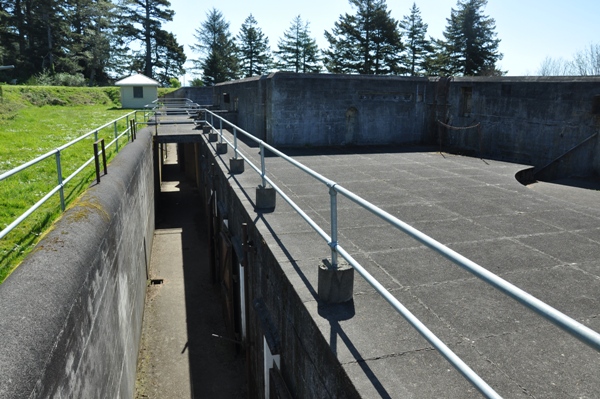
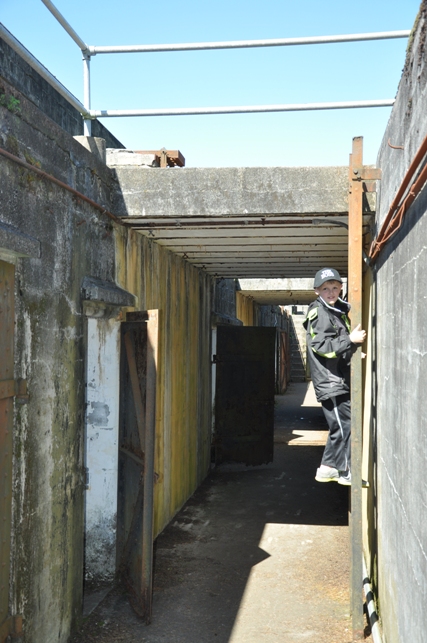
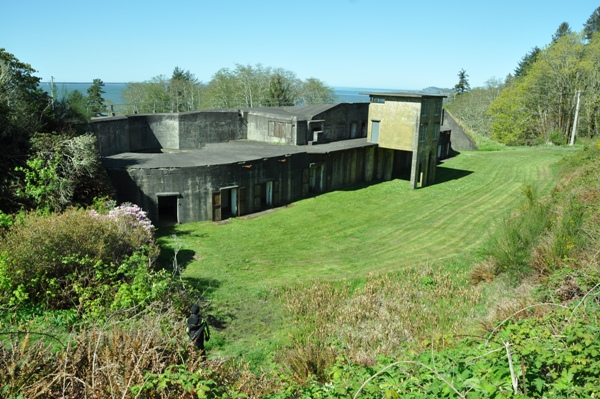
The architecture of Battery Jules Ord is a lesson in form and function. In the late 19th century, the U.S. military began to build with concrete instead of the earthworks and brick of earlier defenses. The use of concrete allowed for a stronger two-story structure. The upper story supported the disappearing guns while the ground floor was used to store power and ammunition. Crews from the Army Corps of Engineers used horses and a small train to haul dirt and cement to the battery site. Construction of Battery Ord started in December of 1896 and required almost twenty months to complete. Battery Ord was built so ships could not see it from the water. That meant that the disappearing guns of Batter Ord were hidden from the enemy's view and could be loaded by their crews in greater safety. The fill in front of the concrete was designed to resist penetration from enemy fire.
The 3-inch guns that were once mounted here protected the minefield that lay in the river between Fort Columbia and Fort Stevens. Active for less than 20 years, Battery Crenshaw illustrates the ever-changing technology of military defense. The guns from Battery Crenshaw were removed in 1918 when they were determined to be obsolete.
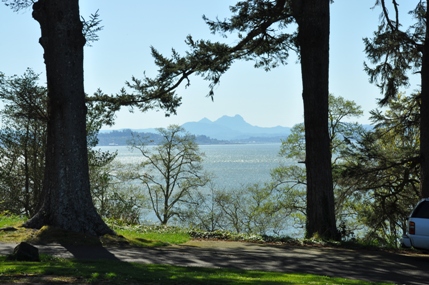
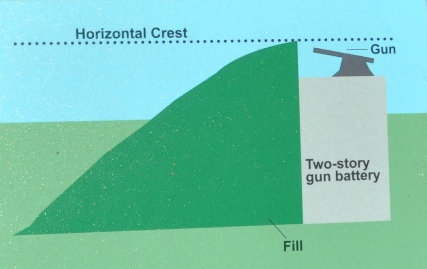
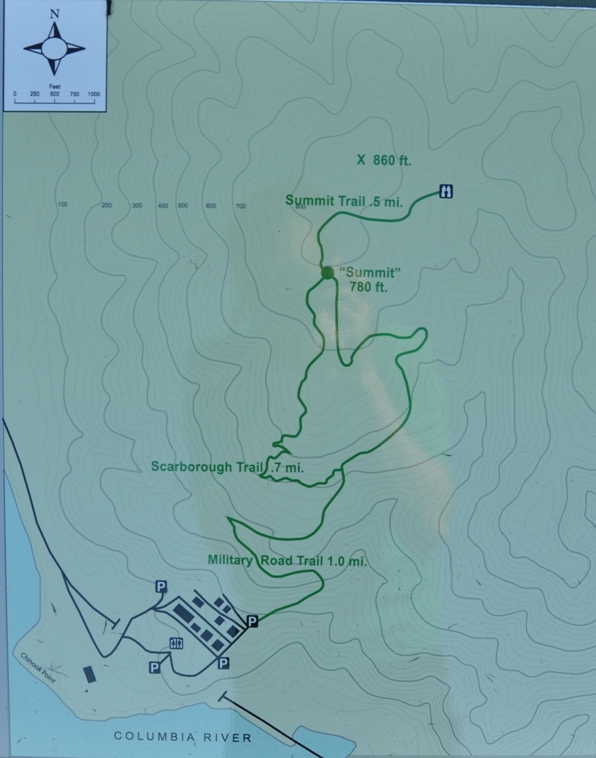
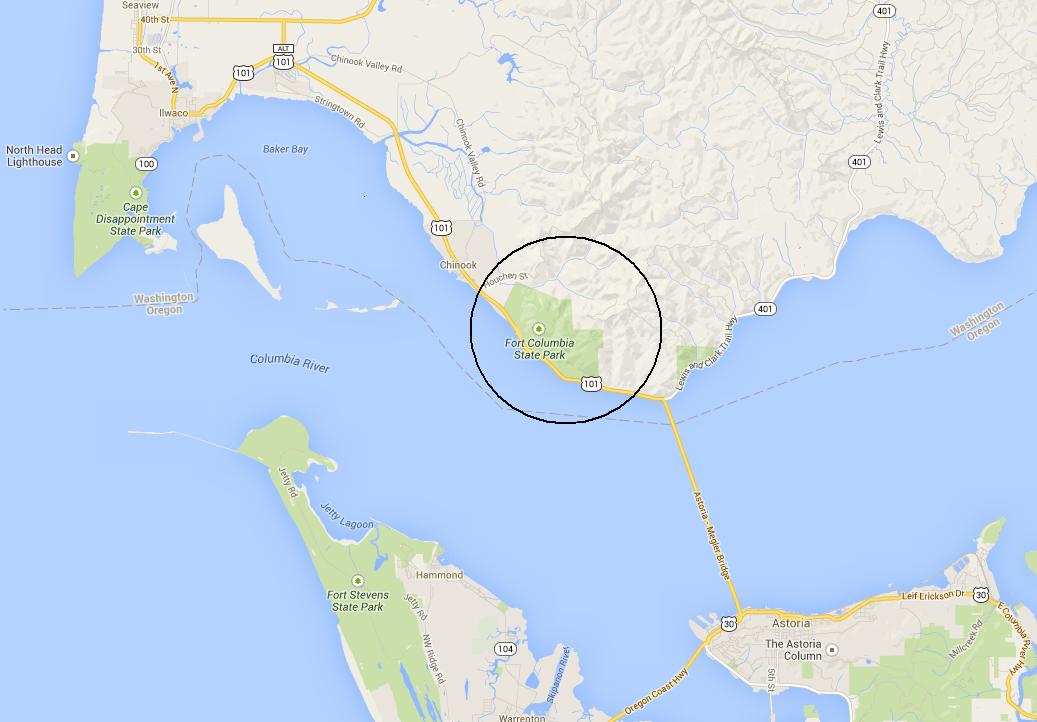
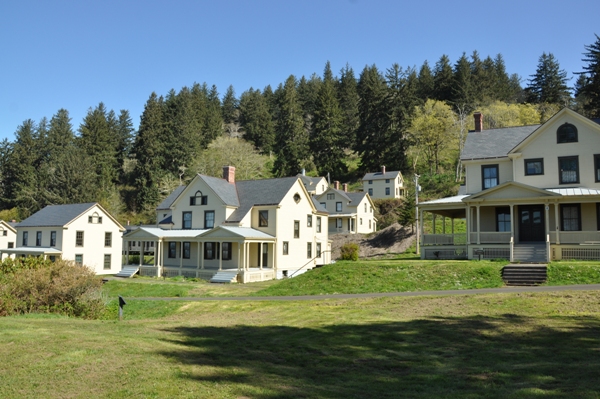
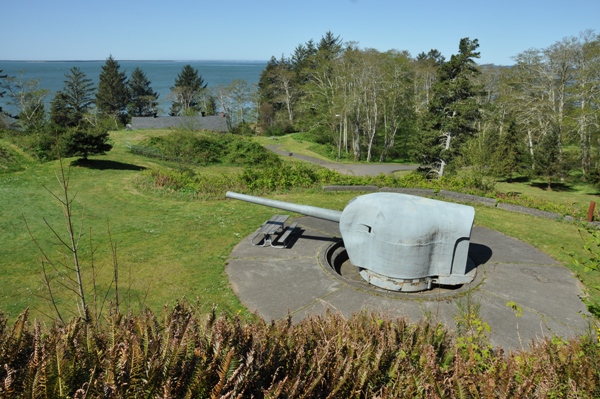
Battery Jules Ord
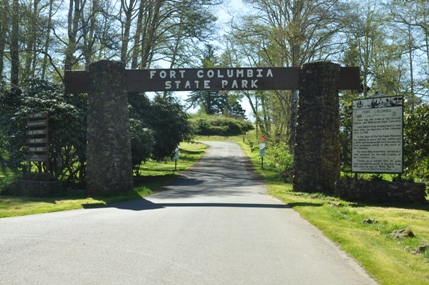
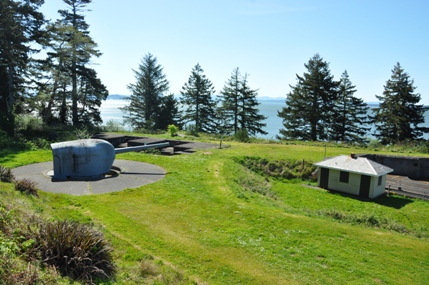
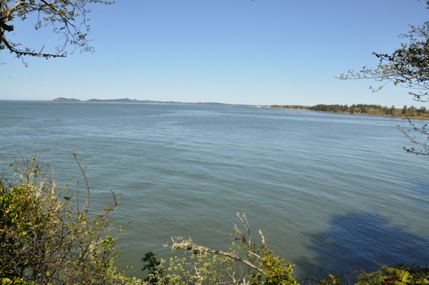
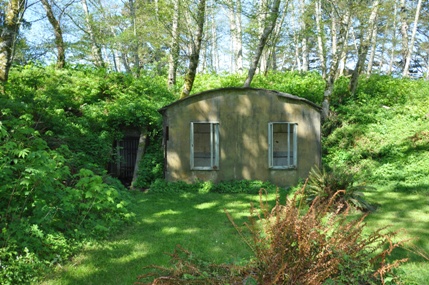
Saddle Mountain in Oregon Coastal Mountains

Exploring Battery Crenshaw
This building below was built around 1906 as ordnance storage. Ordnance is weapons, their ammunition and related items. The strategic location of this warehouse at the river's edge allowed goods to be delivered easily from the boat to the dock to storage. By World War II, this building served a new function. The troops that lived and worked here lived isolated lives. It was important for the morale of the men to have positive recreational outlets for their energy. The storage building was converted to a theater providing a place to show movies and hold live entertainment. Locals would bake pies and attend social activities at the fort. For dances, truckloads of girls were brought in to attend the festivities. Many new romances began this way, as a result, many soldiers married and settled in the area.
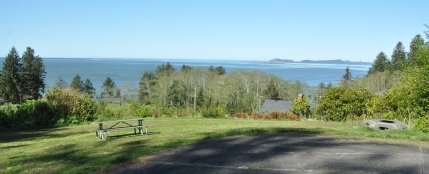

Hiking Trail Map
Fort Columbia 6-inch cannon















